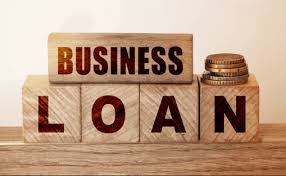Secured loans are a popular borrowing option for individuals who need access to larger amounts of money or want to benefit from lower interest rates. By offering collateral to back the loan, borrowers can secure better terms and potentially higher loan amounts. This guide explores what secured loans are, their benefits, types, and considerations before taking one.
What Are Secured Loans?
Secured loans are loans that require the borrower to provide an asset as collateral. This collateral reduces the risk for the lender, allowing them to offer better terms such as lower interest rates and higher borrowing limits. Common types of collateral include real estate, vehicles, savings accounts, and other valuable assets.
Types of Secured Loans
Secured loans come in various forms, each suited for different financial needs and collateral types:
1. Mortgage Loans: These loans are secured by real estate property. Mortgages are typically used to purchase a home, and the property itself serves as collateral. If the borrower defaults, the lender can foreclose on the property to recover the loan amount.
2. Home Equity Loans and Lines of Credit (HELOCs): These loans allow homeowners to borrow against the equity in their homes. Home equity loans provide a lump sum, while HELOCs offer a revolving credit line.
3. Auto Loans: Secured by the vehicle being purchased, auto loans often come with lower interest rates due to the collateral. If the borrower defaults, the lender can repossess the vehicle.
4. Secured Personal Loans: These loans can be secured by various types of collateral, such as savings accounts, certificates of deposit (CDs), or other personal assets. They can be used for a variety of purposes, including debt consolidation, home improvements, or large purchases.
5. Secured Credit Cards: These credit cards require a cash deposit as collateral. They are often used by individuals looking to build or repair their credit scores.
Benefits of Secured Loans
Secured loans offer several advantages that make them appealing to borrowers:
– Lower Interest Rates: Because the lender’s risk is mitigated by the collateral, secured loans typically come with lower interest rates compared to unsecured loans.
– Higher Borrowing Limits: The presence of collateral allows lenders to offer higher loan amounts, making secured loans suitable for significant expenses like home purchases or major renovations.
– Improved Approval Odds: Collateral reduces the lender’s risk, which can improve your chances of approval, especially if you have a lower credit score.
– Flexible Terms: Secured loans often come with more flexible repayment terms, allowing borrowers to choose a plan that fits their financial situation.
Considerations before Taking a Secured Loan
While secured loans have many benefits, it’s essential to consider the following factors before applying:
– Risk of Losing Collateral: If you default on a secured loan, the lender has the right to seize the collateral. This means you could lose your home, car, or other valuable assets.
– Loan Amount: Ensure that the loan amount you seek is within the lender’s limits and that the value of your collateral is sufficient to secure the loan.
– Interest Rates and Fees: Although secured loans generally have lower interest rates, it’s important to compare offers from different lenders to find the most favorable terms. Be aware of any additional fees that may apply.
– Repayment Terms: Understand the repayment schedule, including the loan duration and monthly payment amounts. Choose terms that fit your budget to avoid financial strain.
– Credit Impact: While secured loans can be easier to obtain, they still affect your credit score. Timely payments can improve your credit, but missed payments can have negative consequences.
How to Apply for a Secured Loan
Applying for a secured loan involves several key steps:
1. Evaluate Your Needs: Determine how much money you need to borrow and what type of collateral you can offer.
2. Research Lenders: Compare lenders to find the best terms, interest rates, and fees. Look for reputable lenders with positive customer reviews.
3. Prepare Your Collateral: Ensure that your collateral meets the lender’s requirements. For real estate, this might involve getting a property appraisal.
4. Check Your Credit Score: Knowing your credit score can help you understand your eligibility and the interest rates you may qualify for.
5. Gather Documentation: Prepare necessary documents such as identification, proof of income, and details about the collateral.
6. Submit Your Application: Complete the loan application and provide the required documentation. Many lenders offer online applications for added convenience.
7. Approval and Funding: Once approved, the lender will disburse the loan funds. This process may involve a formal agreement outlining the terms and conditions.
Conclusion
Secured loans offer a practical and cost-effective way to borrow money by leveraging your assets. They provide access to lower interest rates, higher borrowing limits, and flexible terms, making them suitable for various financial needs. However, it’s crucial to understand the risks involved, particularly the potential loss of collateral. By carefully considering your options and choosing a loan that aligns with your financial situation, you can effectively use secured loans to achieve your financial goals.



